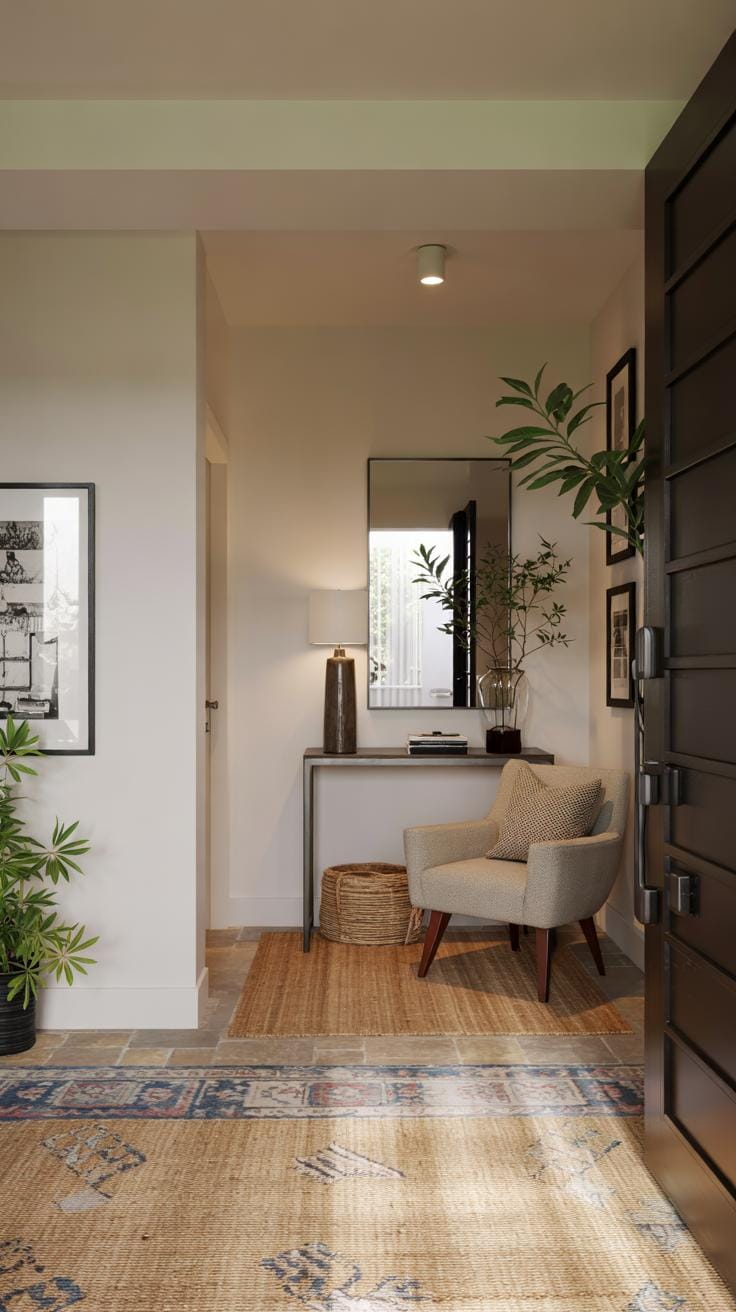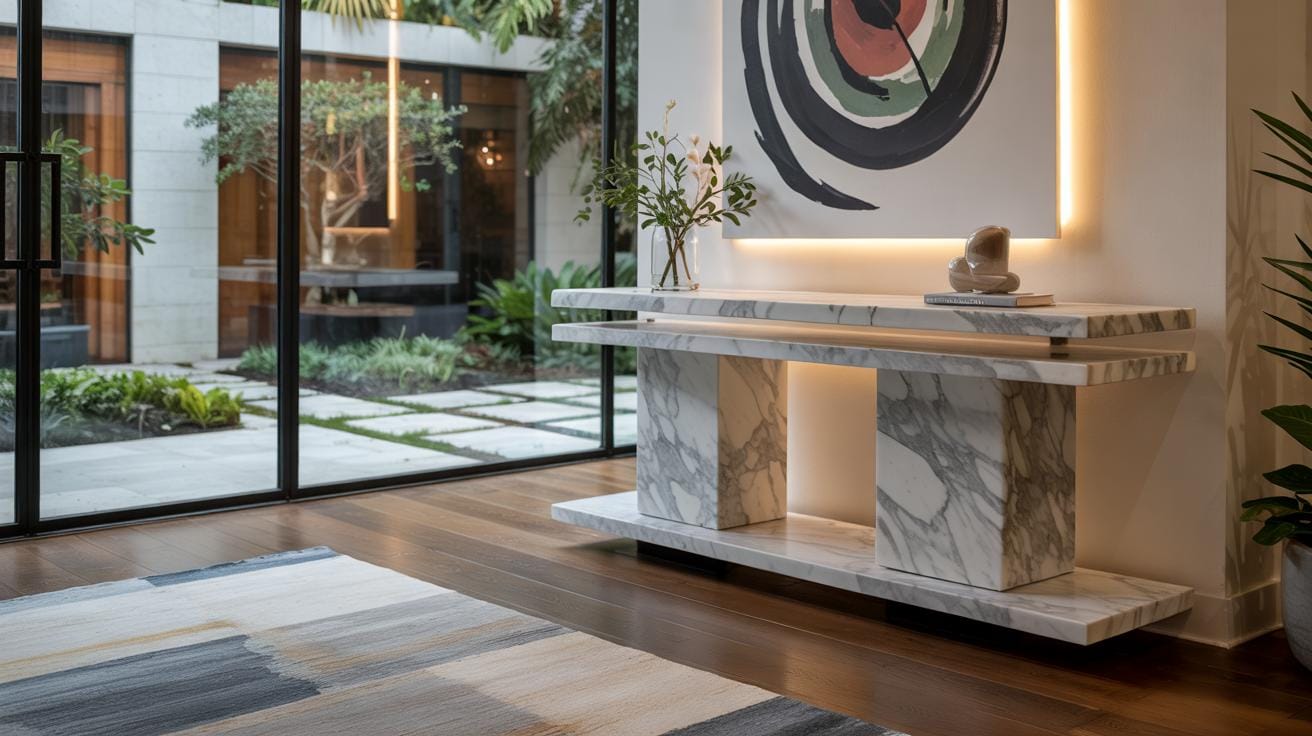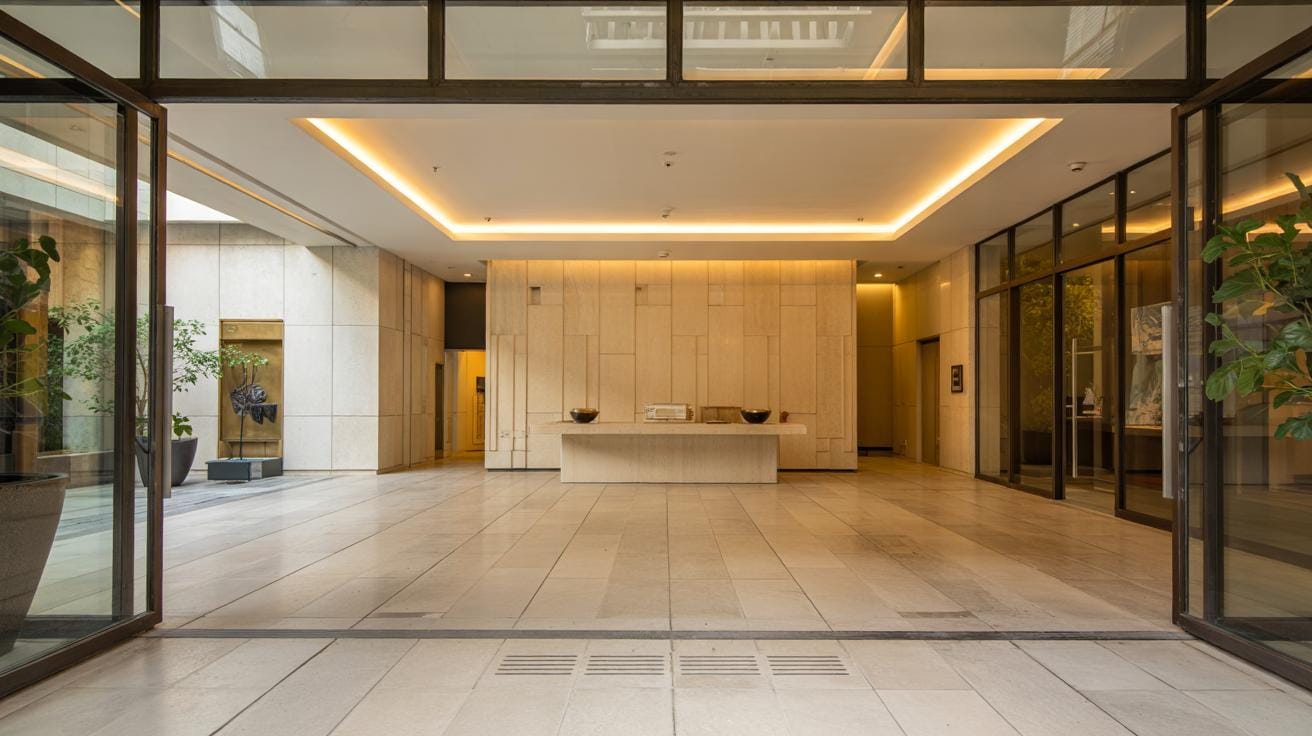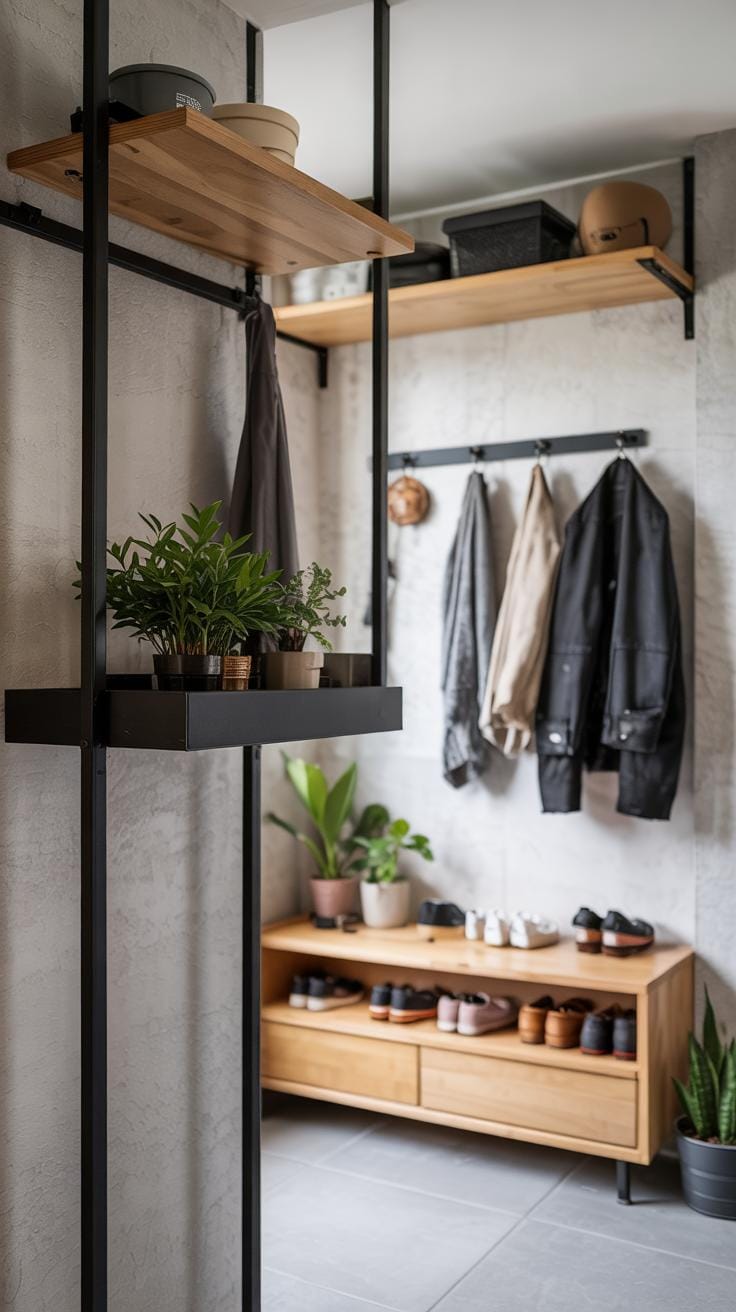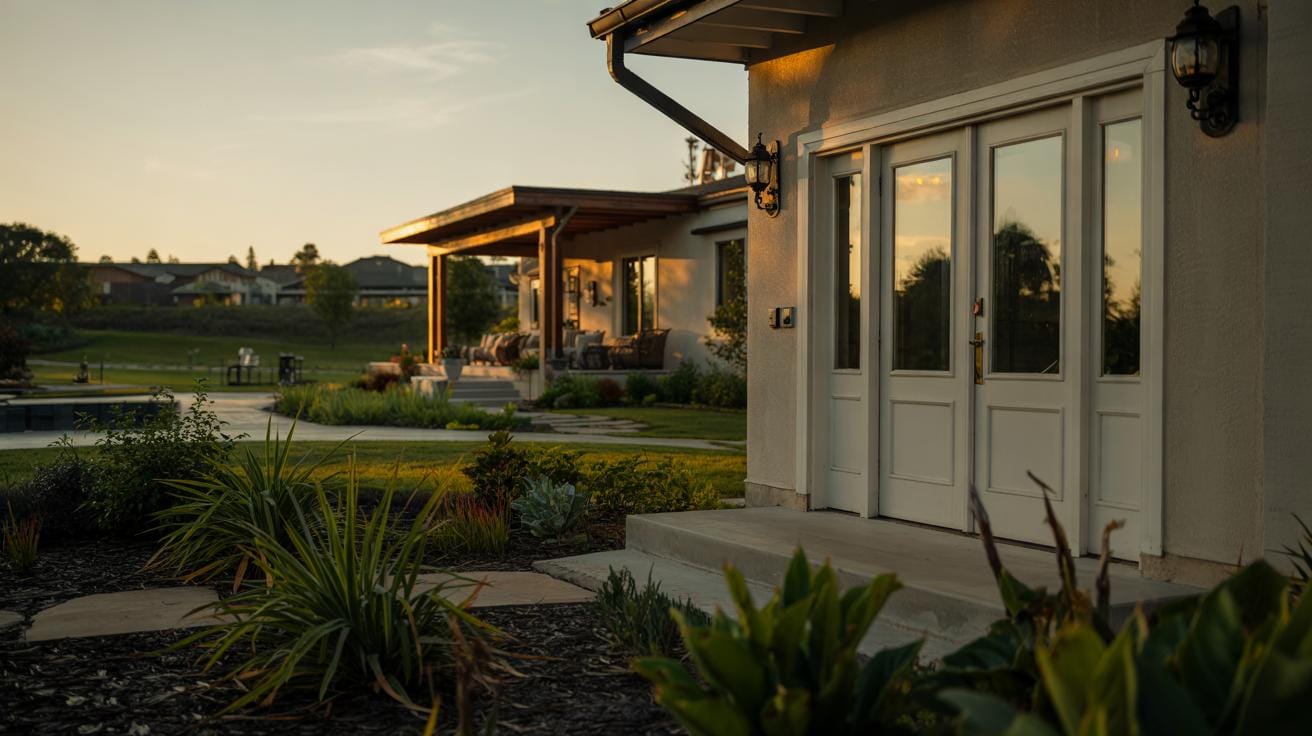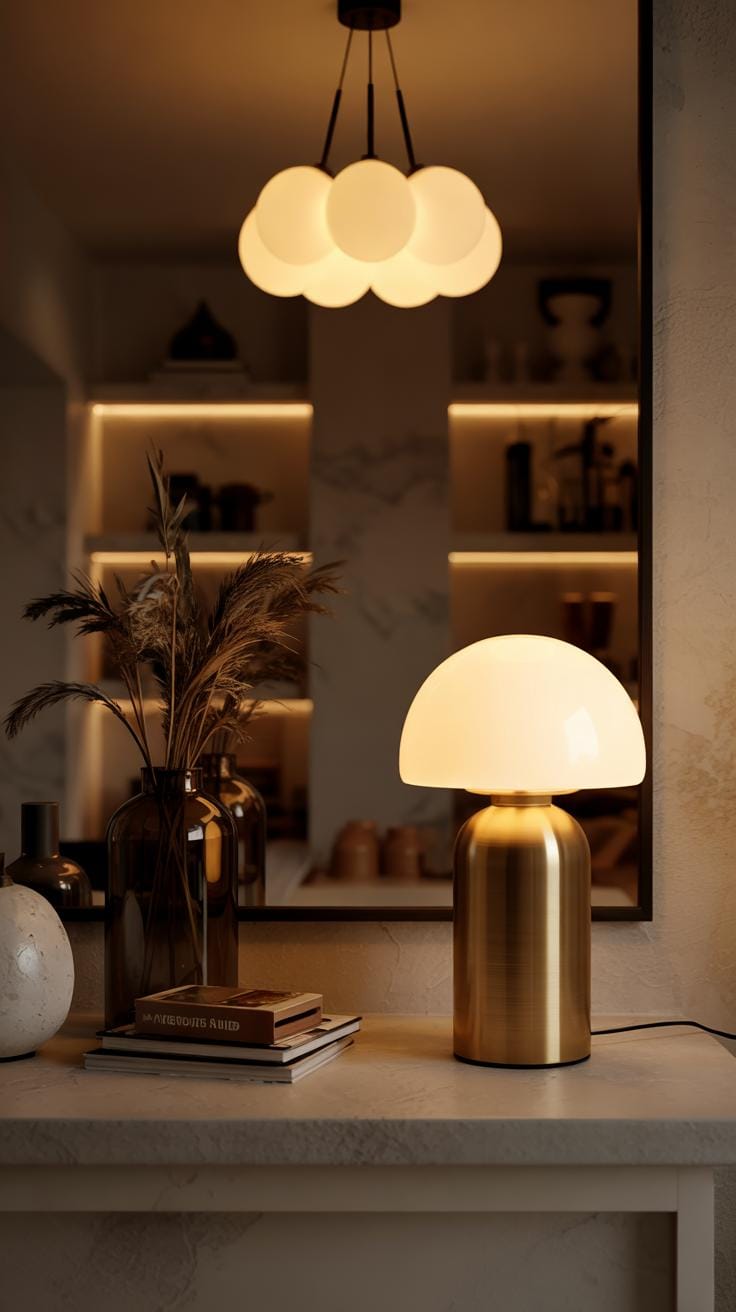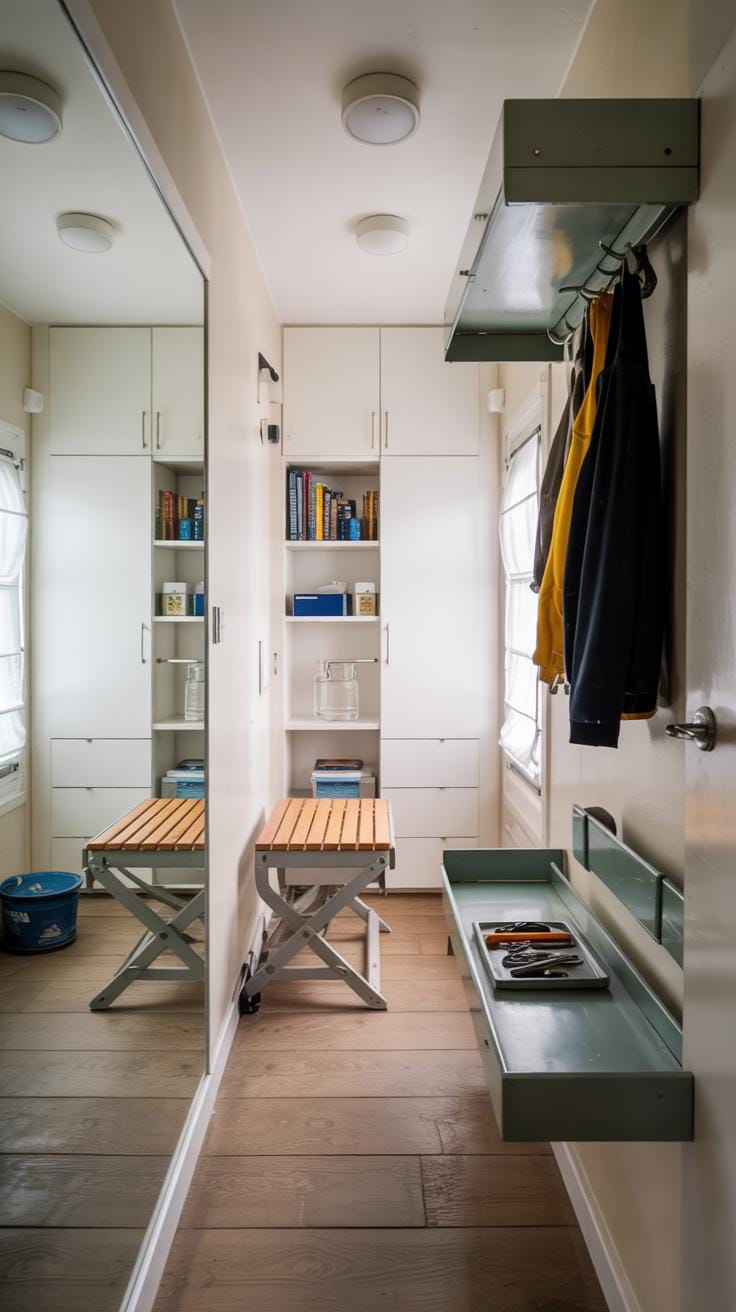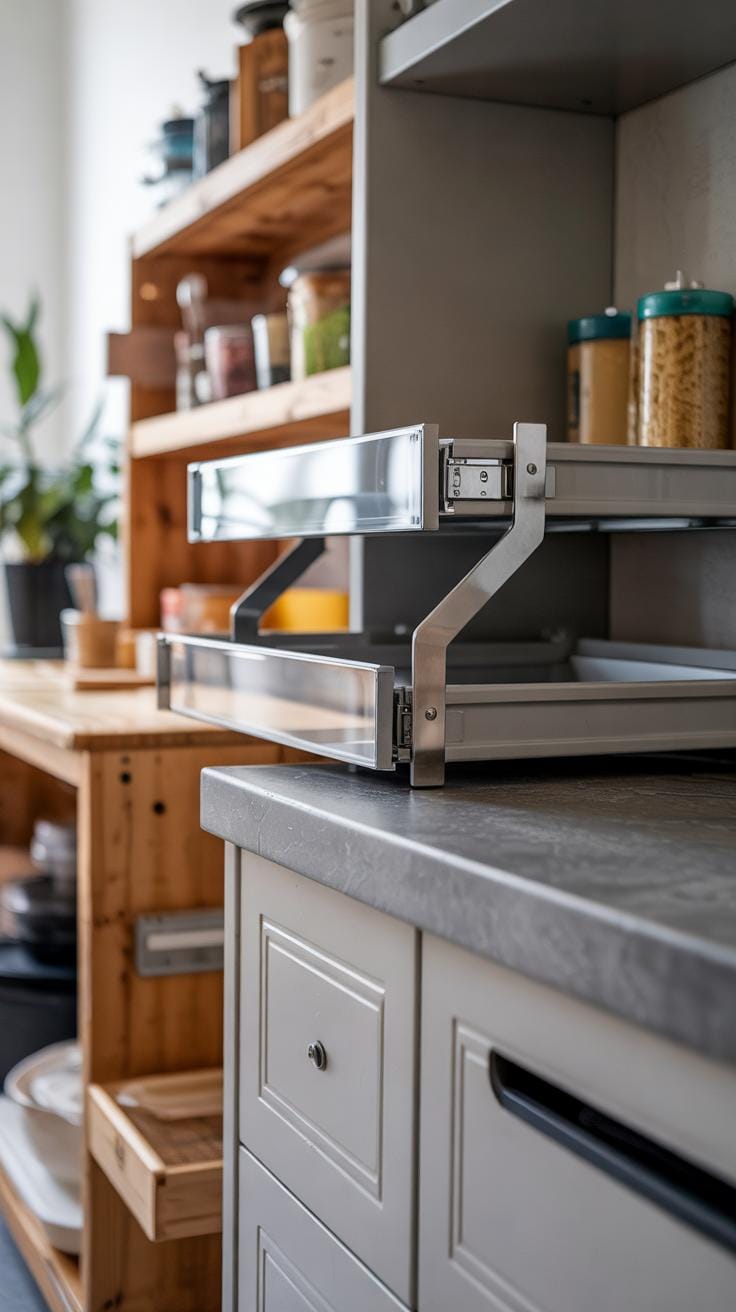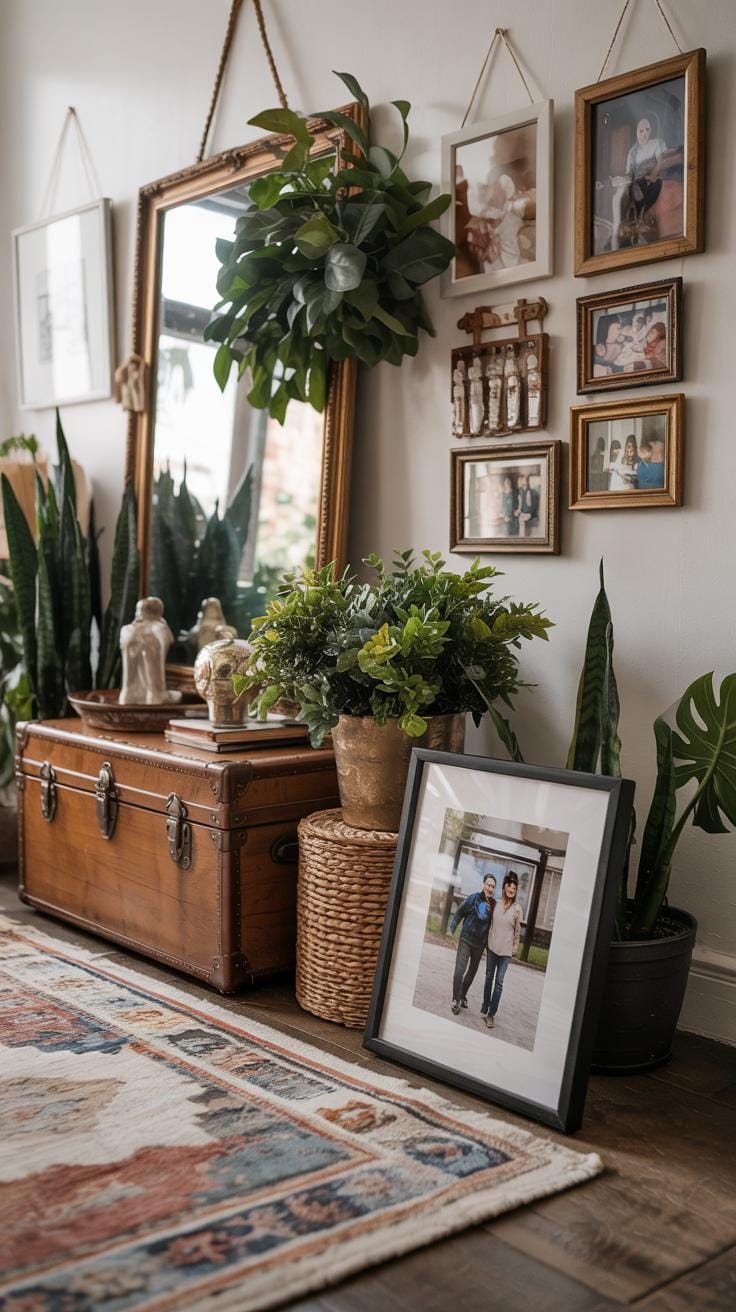Introduction
Your entryway is the first part of your home that guests see. It should look inviting and tell a story about your style. More than that, it needs to work well for your daily life. A simple and organized entryway can help you start and end your day with less hassle. This article focuses on ways to upgrade your entryway so that it looks good and serves your storage needs.
Whether you have a small or large entry space, you can find solutions that fit your needs. Good entryway design considers storage, style, and functionality. How can you make the most of your entryway? What storage ideas can keep things neat without cluttering the space? These are the key questions explored. You will learn practical ideas to create a balanced entrance area that welcomes guests and keeps your home orderly.
Understanding Your Entryway Space
Your entryway plays a key role in your home’s daily function. It sets the tone for visitors and outlines how you move in and out every day. A well-planned entryway can reduce clutter and stress, making your routines smoother.
Entryways come in many shapes and sizes. Some are compact with just enough room for a door and a small mat. Others are wide and open, allowing space for seating, storage, or decorative items. Before upgrading, measure your entryway carefully. What is the width and length? Are there any corners, angles, or unusual door placements? Understanding these details helps you plan upgrades that fit perfectly.
Think about lighting, traffic flow, and how you want the space to feel. Do you prefer a clear, open path or a cozy, organized nook? Your entryway should reflect both your lifestyle and your home’s architecture. Starting with clear facts ensures your improvements are both practical and stylish.
Importance of Entryway Layout
The layout determines how easily you can use your entryway every day. A cluttered or cramped space slows you down and reduces storage options. Make sure to measure your entryway’s dimensions before planning.
Plan different functional zones based on your habits. Will you need a place to sit while taking off shoes? Is there room for a coat rack or a shelf for keys? Defining these zones prevents overcrowding and keeps your entryway organized.
Consider the flow of movement. You want a clear path from the door to other parts of your home without obstacles. Use these measurements and zones as a blueprint when choosing entryway furniture or storage units. Adequate space creates balance and improves both style and usability.
Assessing Your Needs and Habits
Look closely at how you use your entryway. What do you carry in and out each day? Backpacks, dogs, wet umbrellas? Recognizing your habits helps decide what storage you really need.
Ask yourself: Do I need hanging space for coats? Should I include a drawer for gloves and hats? Would a bench with shoe storage save time during busy mornings? These questions guide you to make practical choices.
Your style matters, too. Do you prefer clean lines or a more rustic look? Combining your storage needs with personal taste ensures the space feels welcoming. Knowing what you use and want keeps your entryway functional and visually pleasing. What items are essential for you to grab quickly on your way out?
Optimizing Storage Without Sacrificing Style
Storage plays a key role in keeping your entryway organized. You want places to store shoes, bags, and keys without overwhelming the space. Choosing storage solutions that fit your entry’s size and shape helps maintain a clean look.
Think about how to arrange storage where it is easy to reach but does not block walkways or doorways. Using furniture with hidden compartments keeps clutter out of sight. Consider narrow cabinets or open shelves that show off decors, such as plants or books.
Can your storage add to your entryway’s style? Pick designs that match your home’s look. Simple lines and natural materials often complement most interiors. Avoid bulky or mismatched pieces that break the visual flow. Smart placement and choice of storage can improve both function and appearance at the same time.
Smart Storage Options
Shelves offer open space for baskets or decorative boxes. Hooks work well for coats and bags, freeing up floor space. Cabinets store more and hide items you don’t want seen. Benches with built-in storage combine seating and hidden compartments for shoes or hats.
Vertical storage makes the most of wall height and leaves your floor clear. A tall shelving unit or wall-mounted hooks use unused space efficiently. Multipurpose furniture like ottomans or benches with storage gives double duty without extra clutter.
Do you have enough space for a tall unit, or would a low bench better suit your entryway? Whichever you choose, pick pieces that keep your entry functional and neat every day.
Blending Storage with Decor
Matching storage materials with your decor creates harmony. Wood shelves or cabinets pair well with warm tones and natural themes. Metal hooks suit modern or industrial settings best. Use colors that either blend with your wall or create a subtle contrast.
Incorporate decor items like framed photos, artwork, or small plants on or near storage units. This balances practicality with style. Storage pieces should feel like part of the room, not an afterthought.
Think about your entryway’s colors and textures. Would a painted cabinet brighten the space, or will open wooden shelves add warmth? Align storage choices with your style vision to keep the space cohesive and welcoming.
Choosing Functional and Stylish Furniture
Furniture in the entryway plays a key role in both organization and welcoming guests. Your choices should help keep clutter under control while matching your home’s style. Look for pieces that combine storage with seating or display. For instance, a bench with hidden compartments or a sleek console table with drawers keeps essentials nearby without crowding the space. Avoid bulky furniture that disrupts flow or feels out of place.
Think about your daily routine. Do you need a spot to sit and put on shoes? A place to stash mail? Choose items that fit those needs but also suit your decor, whether modern, rustic, or traditional. When you pick furniture with both function and design in mind, your entryway feels inviting and practical.
Multipurpose Furniture Choices
Storage benches often serve double duty by offering seating and a place to hide shoes or bags. Console tables with drawers let you drop keys and mail without creating mess. Coat racks with shelves or cubbies hold jackets, hats, and scarves in one tidy spot. Multipurpose furniture reduces clutter by combining tasks in one piece.
For example, a bench with a lift-up lid keeps boots out of sight but close at hand. A narrow console table with built-in storage works well in small entryways. These pieces make your entryway easier to use and clean. What habits do you have that a multipurpose item could help with?
Furniture Placement for Flow and Accessibility
Placing furniture well helps keep the entryway open and easy to navigate. Leave enough space for people to move freely without bumping into items. Position seating near the door for quick shoe changes, but not in a spot that blocks the way. Keep drawers and doors accessible without forcing squeezes.
Store frequently used items within reach but out of walking routes to avoid clutter. For instance, place a coat rack close to the door, but not where it interferes with entry. Mapping your entryway’s main path can help decide the best spots. Does your current setup make daily routines smooth, or could small shifts improve flow?
Utilizing Wall Space Effectively
Walls in your entryway offer more than just a backdrop. They can become key players in organizing your essentials and enhancing your home’s style. Using hooks, shelves, and artwork, you can turn empty wall space into functional storage spots and visual highlights.
Hooks and racks provide quick access to coats, bags, and keys, keeping clutter off the floor and furniture. Shelves give a place for smaller items, boxes, or decorative objects, adding layers to the design while keeping things tidy.
Artwork, mirrors, or photos on the walls bring personality and reflect light to make the area feel bigger and brighter. When you focus on these elements, your entryway becomes a practical and inviting space that balances storage with style.
Wall Hooks and Racks for Organization
Choosing the right hooks and racks depends on what you need to store. Single hooks work well for keys or hats, while multi-hook racks handle heavier coats and bags. You can find styles made of wood, metal, or even leather to match your home’s look.
Place hooks near the door at different heights for easy reach by everyone in the family. A lower set can hold kids’ jackets or backpacks, while a higher row can keep adult coats off the floor.
Racks with integrated shelves add more options. Use them to hold mail, sunglasses, or small baskets for extra organization. With hooks and racks placed thoughtfully, you prevent clutter and make coming and going smoother every day.
Incorporating Decorative Elements
Mirrors serve as both decoration and function in your entryway. They reflect natural and artificial light, brightening the space while creating an illusion of roominess. Choosing a mirror with an interesting shape or frame adds a touch of style that catches the eye.
Pictures and wall art bring character, making the entryway feel personal and welcoming. Arrange them as a gallery wall or choose a few large pieces to create impact without overcrowding.
Focus on art that matches your home’s color scheme or adds a pop of contrast. These decorative elements not only improve how your entryway looks but also make it feel more inviting and complete the overall design.
Lighting and Accessories That Enhance the Entryway
Lighting sets the tone for your entryway the moment someone steps inside. Well-placed lights improve visibility and create an inviting atmosphere. You want to avoid dark corners where guests might feel uncertain or stumble. Choosing lighting that fits the size and style of your entryway helps balance design and function.
Accessories are the finishing touches that bring personality to your space. Items like decorative bowls, trays, or baskets keep keys and mail organized while adding interest. Rugs help define the area and protect floors, but they also offer a chance to introduce color or texture. Plants bring life and freshness, making the whole entry feel more inviting.
Think about how these elements work together in your space. Does your lighting highlight your favorite accessories? Do your choices greet you and your visitors with both style and order? Combining functional lighting with thoughtful accessories can transform your entryway into a space that feels both practical and welcoming.
Choosing Practical Lighting
Ceiling lights give broad illumination and are ideal for most entryways. Choose fixtures that spread light evenly to reduce shadows. Sconces on walls add a layer of light that feels softer and more intimate. They also free up floor space, which is helpful in small areas.
Lamps provide flexible lighting and can be moved or adjusted. A table lamp on a small console offers warm light that invites guests to linger. Proper lighting enhances safety by clearly showing steps and edges. It also influences mood—bright and cool lights create energy, while warmer tones promote calm.
Think about your entryway’s size, natural light, and daily use when selecting lights. Do you often enter after dark? Dimmer switches allow you to adjust brightness for different needs. Your goal is to create a welcoming space that feels secure and comfortable the moment anyone walks in.
Adding Personality with Accessories
Select accessories that match your style and support your daily routine. A rug can anchor the entryway by defining the area and protecting floors from dirt and wear. Choose durable materials that clean easily, especially if you have pets or kids.
Plants add a natural element, improving air quality and adding color. Small potted plants or hanging planters work well without cluttering the space. Bowls or trays are perfect for holding keys, sunglasses, or loose change, keeping clutter to a minimum.
Ask yourself which items you grab before leaving the house. Would a decorative basket for scarves or an umbrella stand help you stay organized? Your accessories don’t have to be just decorative—they should simplify your routine and reflect who you are.
Maximizing Small or Narrow Entryways
Small entryways need smart solutions to work well without feeling cramped. You want storage that fits without taking up floor space. Consider slim shelves mounted on the walls to hold keys, mail, or small plants. Wall hooks offer a place for coats and bags without blocking walkways. Foldable furniture like benches or stools can expand when needed and tuck away when not. These choices keep your path clear and tidy.
Keeping the area open helps prevent clutter from taking over. Use vertical space instead of crowding the floor. Could a narrow ledge hold daily essentials, so they don’t pile up by the door? Think about what you use most and design storage around those items. This approach maintains a neat and welcoming feel, even in the smallest spaces.
Space-Saving Storage Ideas
Compact storage solves many problems in tight entryways. Look for wall-mounted organizers that combine hooks, shelves, and cubbies in one piece. A slim floating shelf can hold decor and small items without blocking movement.
Fold-out benches add seating and hidden space for shoes or bags. Stackable baskets fit under furniture or against a wall. Use magnetic strips for holding metal keys or clips to save drawer space.
Consider multifunctional pieces. Can your mirror also hold small hooks behind it? These solutions reduce clutter and keep your entryway from feeling crowded.
Design Tips for Small Entryways
Light colors make small spaces feel more open. Choose white, soft grays, or pale pastels for walls and trim. Avoid dark tones that shrink the area visually. Mirrors brighten and enlarge a room by reflecting light and opposing walls.
Use simple lighting fixtures that don’t take up space. A flush-mounted ceiling light or slim wall sconces work well. Avoid heavy or ornate pieces that dominate the area.
Keep decorations to a minimum. Select one or two small accents, like a piece of art or a plant, to add personality without cluttering. Ask yourself if each item adds meaning or function. If not, leave it out. This keeps your entryway feeling airy and calm despite limited square footage.
Maintaining Your Entryway Upgrade Over Time
Keeping your entryway both stylish and organized requires regular care. Establish a simple daily routine to put away shoes, coats, and bags as soon as you enter. Setting this habit prevents clutter from piling up and makes your space feel calm every time you walk in. Once a week, take time to assess the storage areas, wipe surfaces, and remove items you no longer need in this spot.
Choosing products that support upkeep is key. Use baskets or bins with easy-to-clean liners for quick tidy-ups. Hooks and shelves with smooth finishes resist dust buildup and make wiping easy. When you adopt small, consistent habits, your entryway remains inviting without extra effort later on.
Daily and Weekly Organization Habits
Start by creating a drop zone for everyday items. Place keys, mail, and sunglasses in designated trays or hooks. This prevents these small items from scattering across tables or floors. At the end of each day, glance over the area and put misplaced things back where they belong.
Once a week, clear out anything that doesn’t belong or isn’t used. Sort shoes, shake out mats, and vacuum the floor. Keeping this rhythm keeps clutter at bay and keeps your storage working smoothly. What small action could you add today to make your entryway easier to manage?
Durable Materials and Easy-to-Clean Surfaces
Select furniture made from hard-wearing materials like solid wood, metal, or plastic composites. These withstand daily bumps and scuffs better than delicate finishes. For flooring, consider tile, vinyl, or sealed hardwood, which handle dirt and moisture while cleaning easily.
Choose surfaces with smooth finishes so dust and spills wipe away without effort. Slip-resistant rugs that are machine washable also add safety and simplify cleaning. Investing in durable, easy-care materials keeps your entryway fresh and functional longer. Which materials in your entryway could you upgrade to make upkeep simpler?
Personalizing Your Entryway to Reflect Your Style
Think about what makes your style unique and how your entryway can show that right away. You want this space to greet guests and yourself with a clear sense of who you are while staying neat and practical.
Start by choosing storage solutions that fit your habits. If you often drop keys and mail, add a small tray or a wall organizer. If shoes pile up, consider a bench with hidden compartments. This keeps things orderly without losing style.
You can mix functional pieces with décor that tells your story. For example, a coat rack shaped like a tree suggests nature themes, or a sleek modern organizer fits a minimalist taste. Ask yourself: what kind of mood do I want when I step inside my home?
Incorporating Colors and Textures
Colors and textures set the tone and warmth of your entryway. Choose shades that match other rooms to create flow. Soft neutrals like beige or gray create calm, while deep blues or greens add richness.
Focus on textiles that feel good to touch. A wool rug, woven basket, or linen cushions bring comfort. These materials also hide wear better and keep the space inviting.
Think about how natural light affects your chosen colors. Dark tones look cozy in bright areas but may feel heavy in low light. What textures do you enjoy running your hands over throughout the day?
Using Art and Sentimental Items
Art and personal items make your entryway distinct and welcoming. Hang a favorite painting, print, or a meaningful photo to catch attention. This can become a conversation starter.
Include objects that remind you of places or moments important to you. Souvenirs on shelves or a small sculpture can add character without cluttering.
Display items in a way that keeps the surface clear and easy to clean. A single statement piece often works better than many small objects. What memories or pieces inspire you when you arrive home?
Conclusions
Entryway upgrades can make a big difference in how your home feels and works. By focusing on both style and storage, you make sure the area looks good and stays organized. Simple changes like adding shelves or using multifunctional furniture help reduce clutter. Your entryway can become a place you enjoy and use daily without stress.
Consider your needs and space size when choosing entryway ideas. Choose designs that fit your lifestyle and personal taste. Small details like hooks for bags or baskets for shoes improve convenience. A well-planned entryway upgrade can improve your whole home experience. Why wait to create an entry area that truly works for you?


